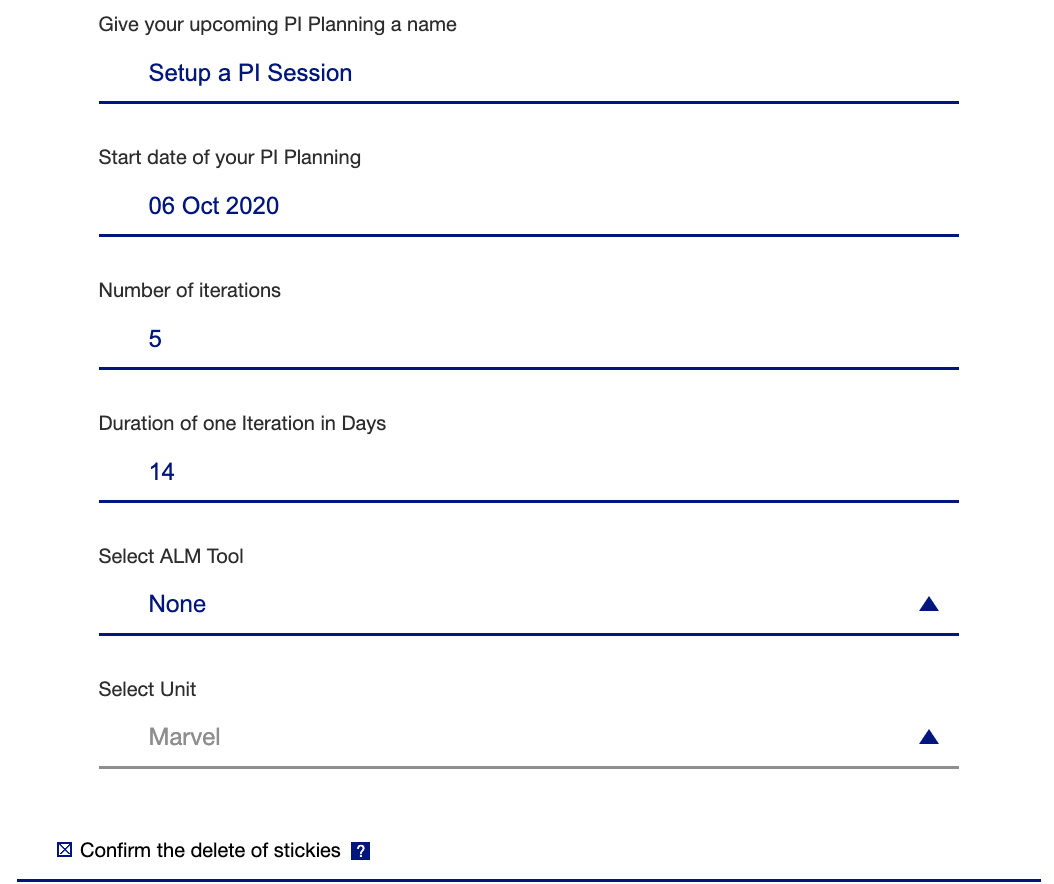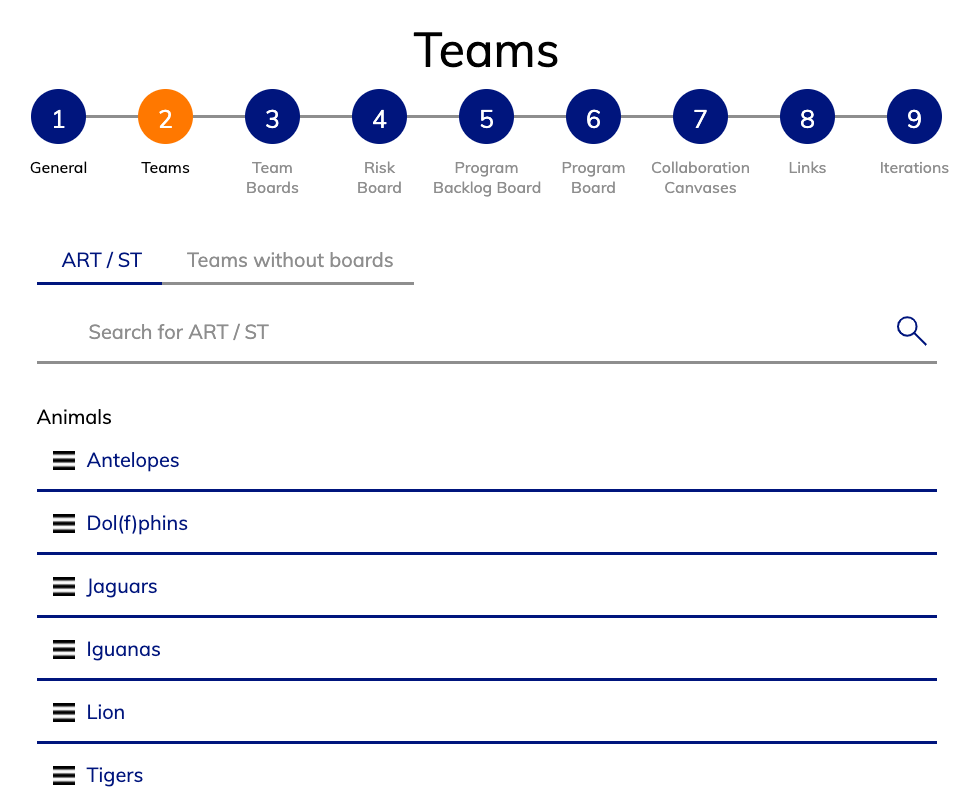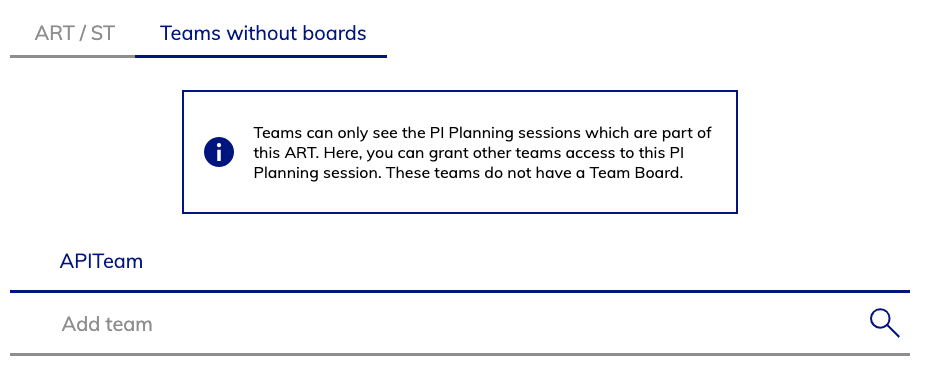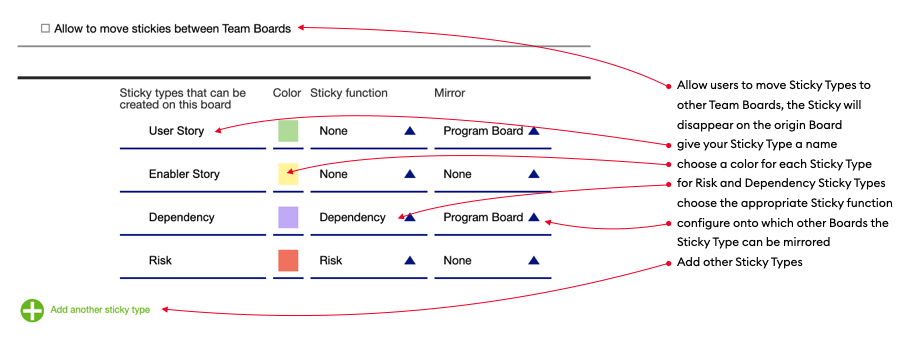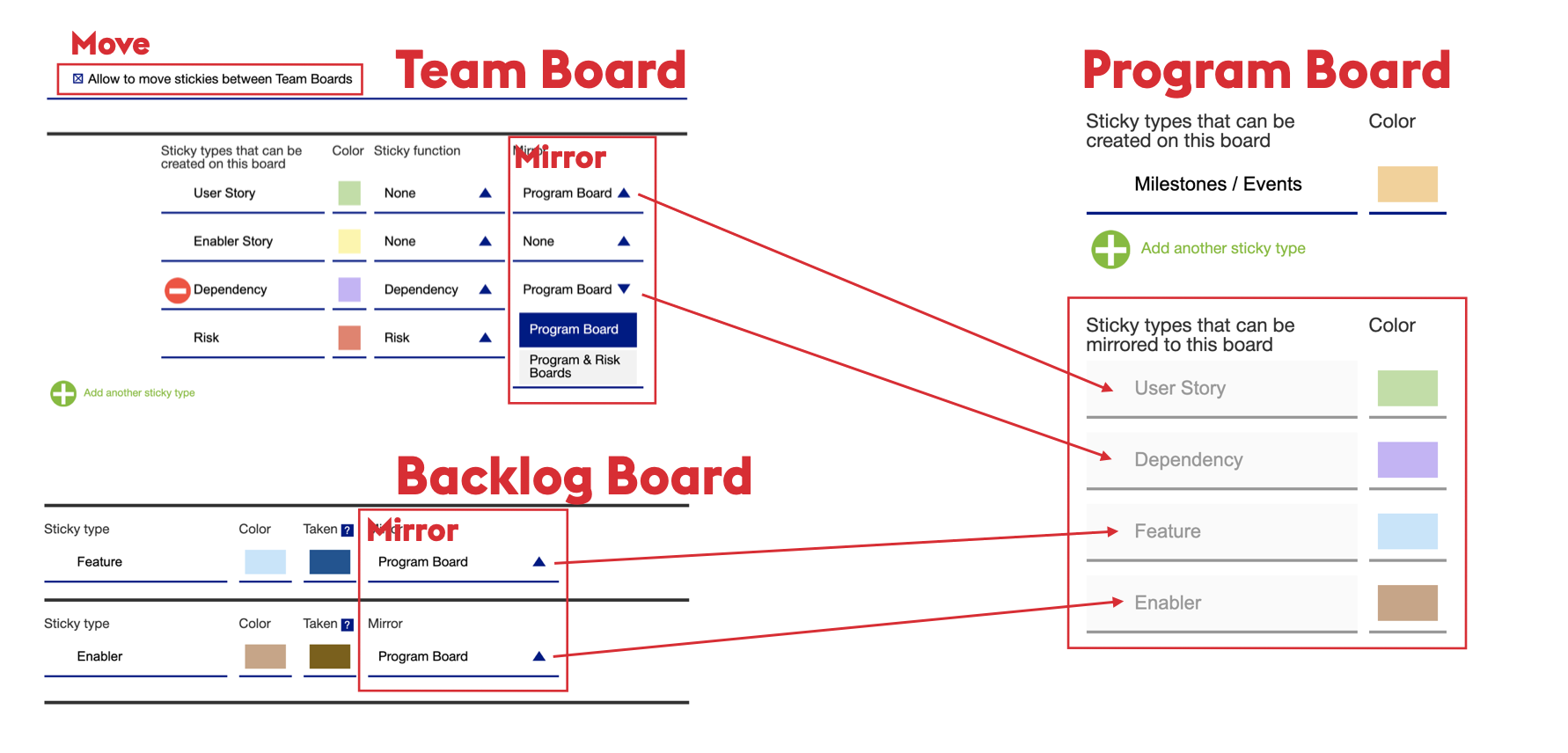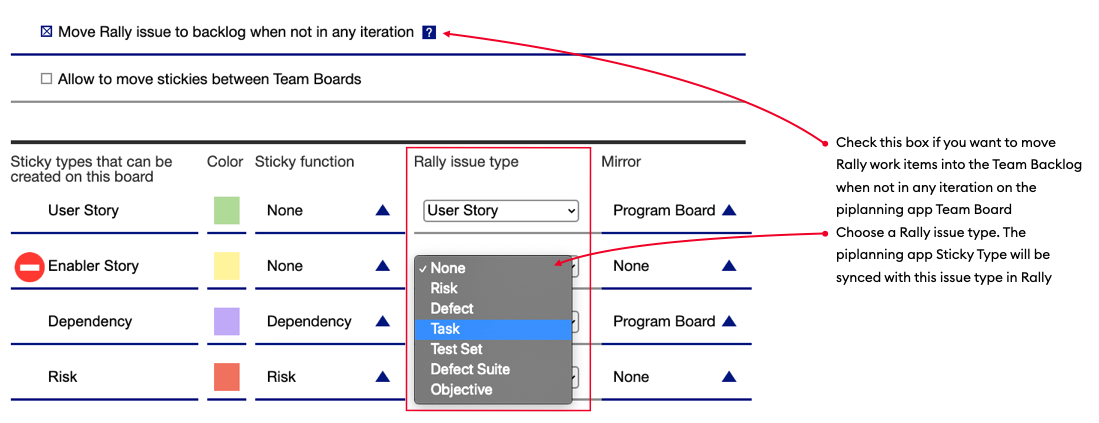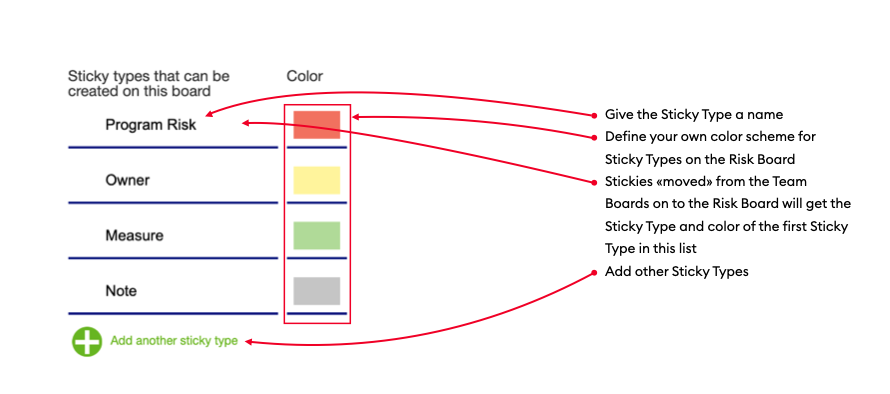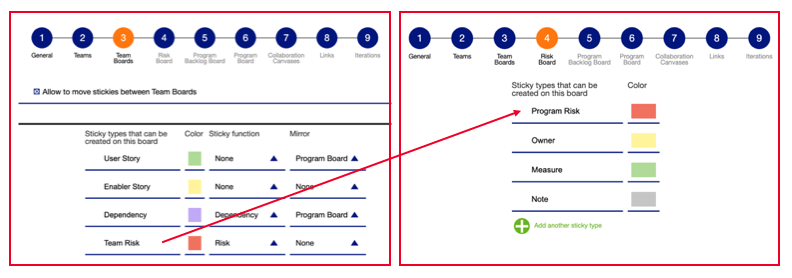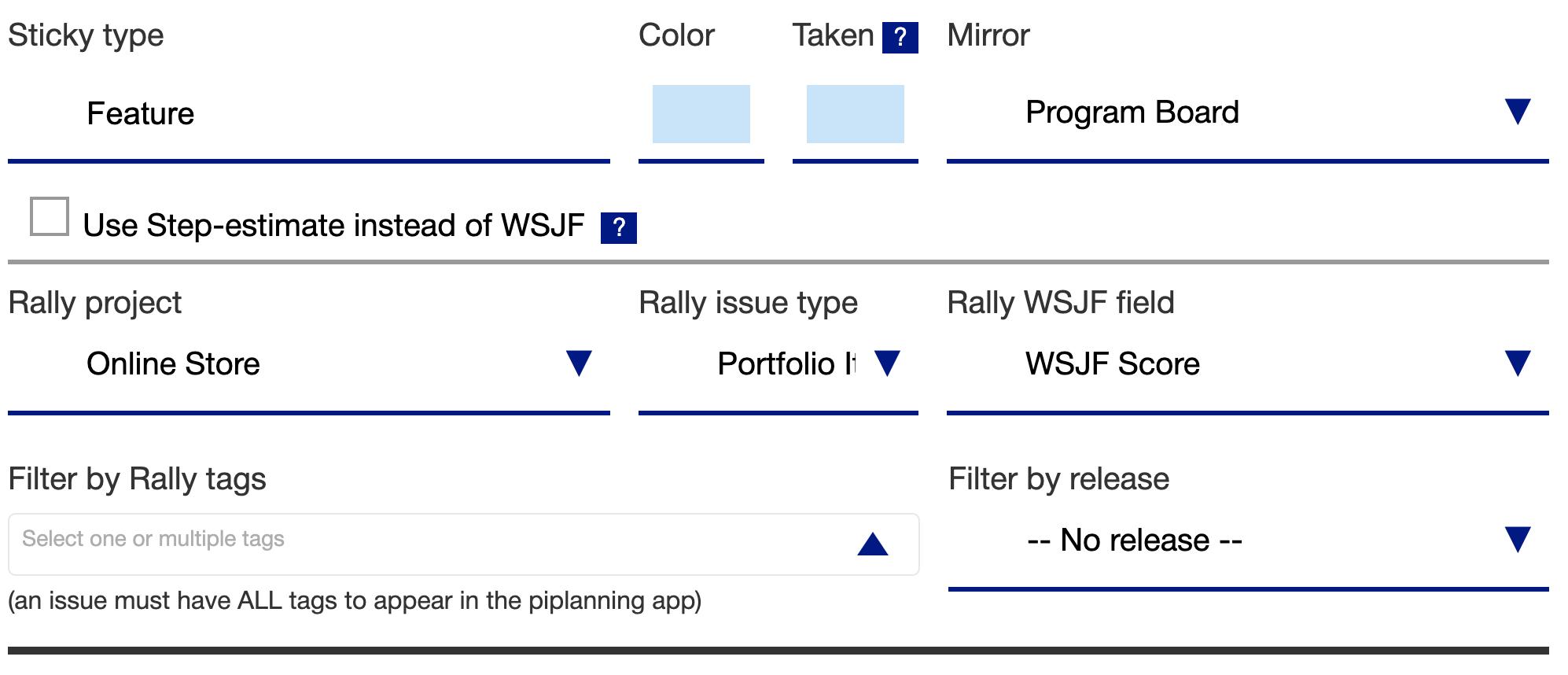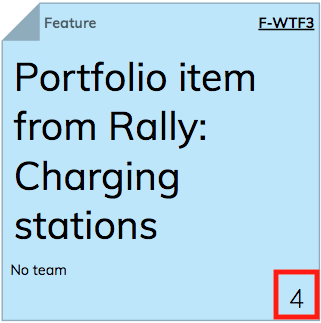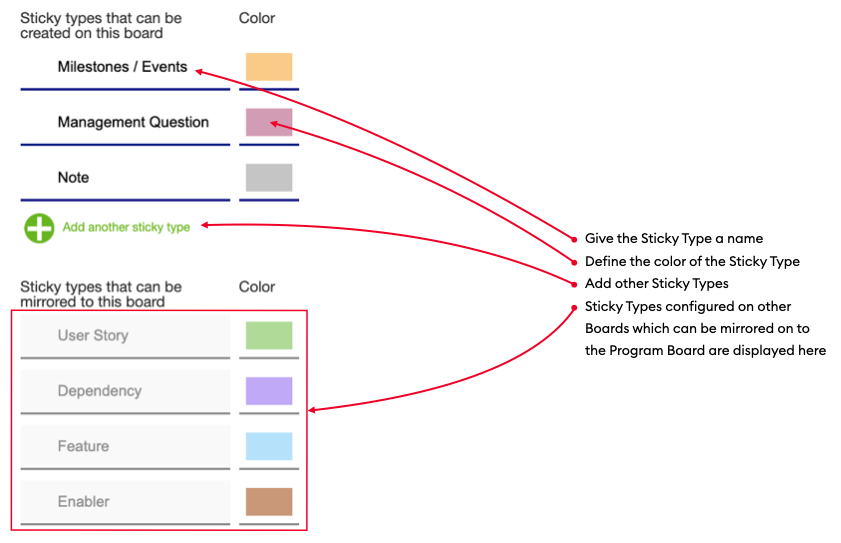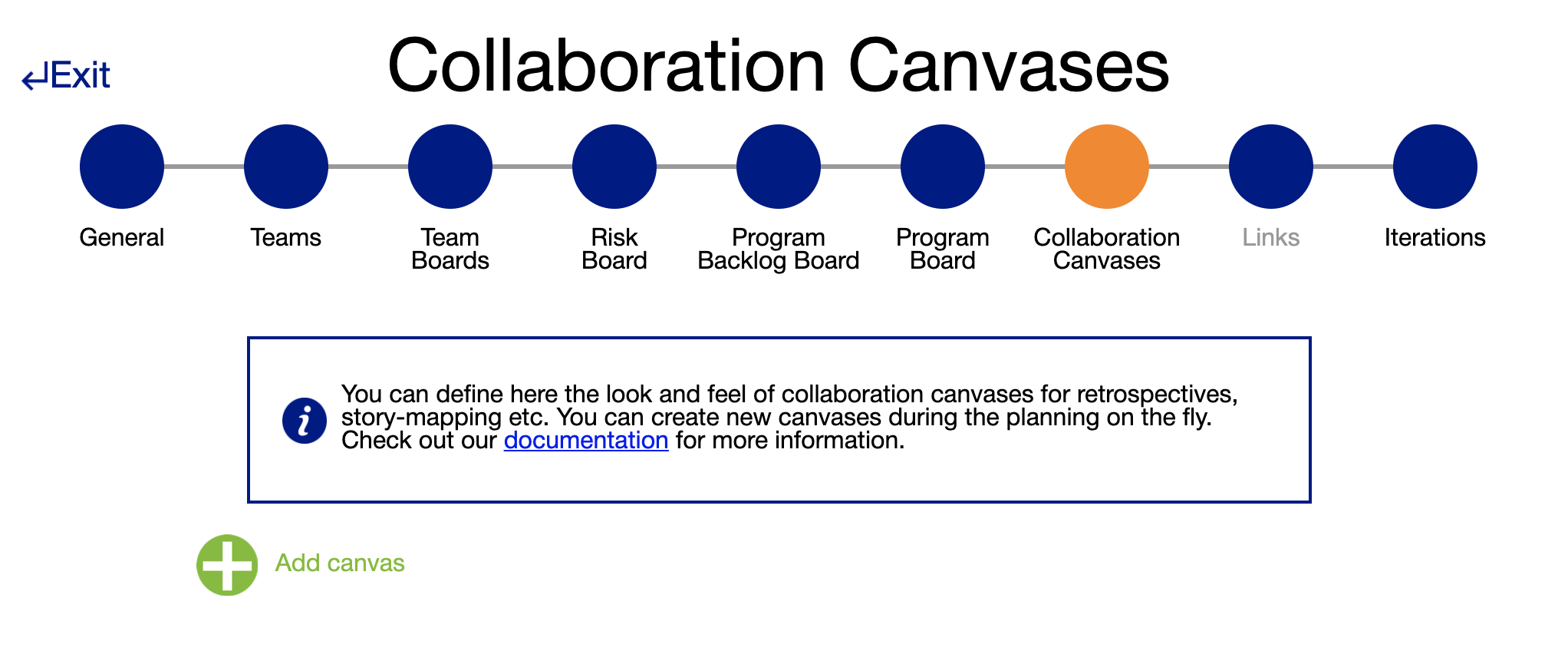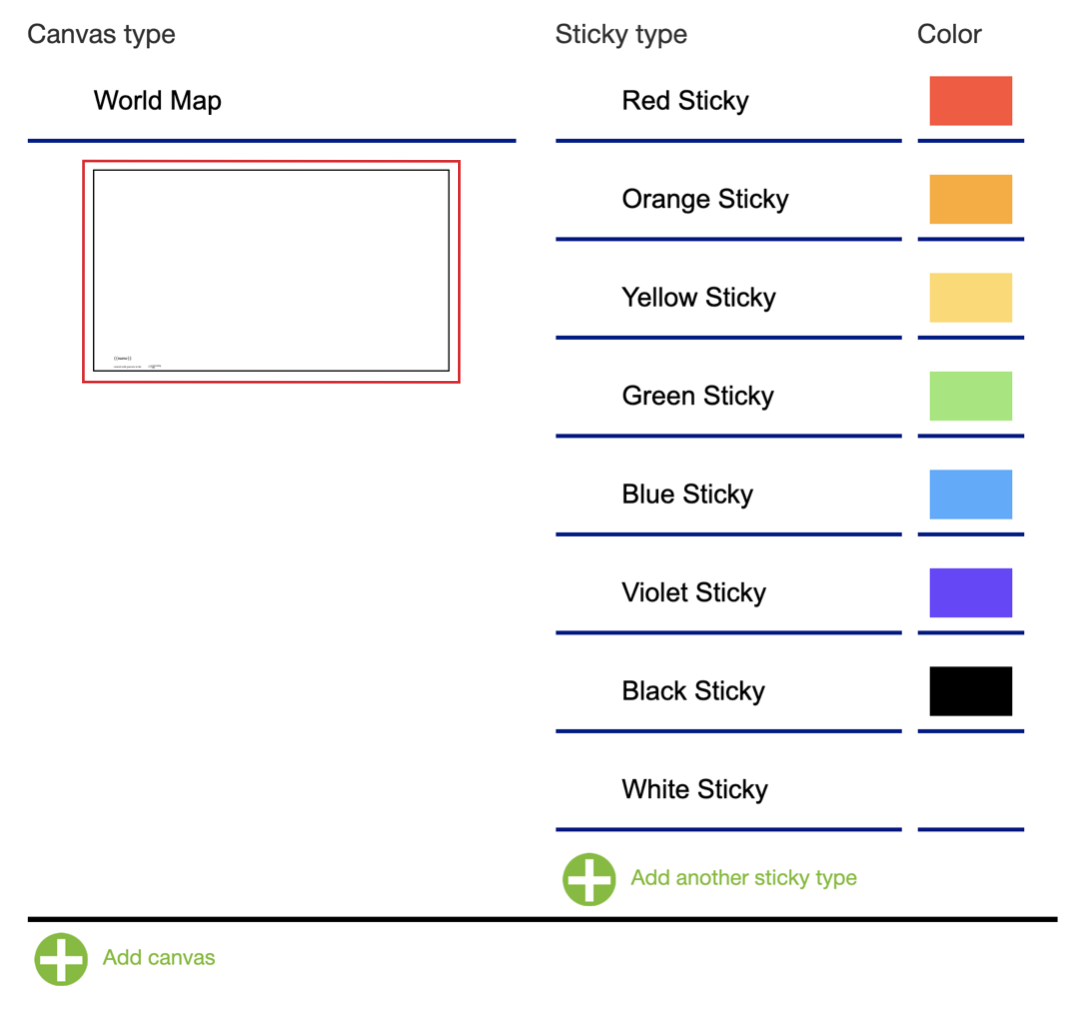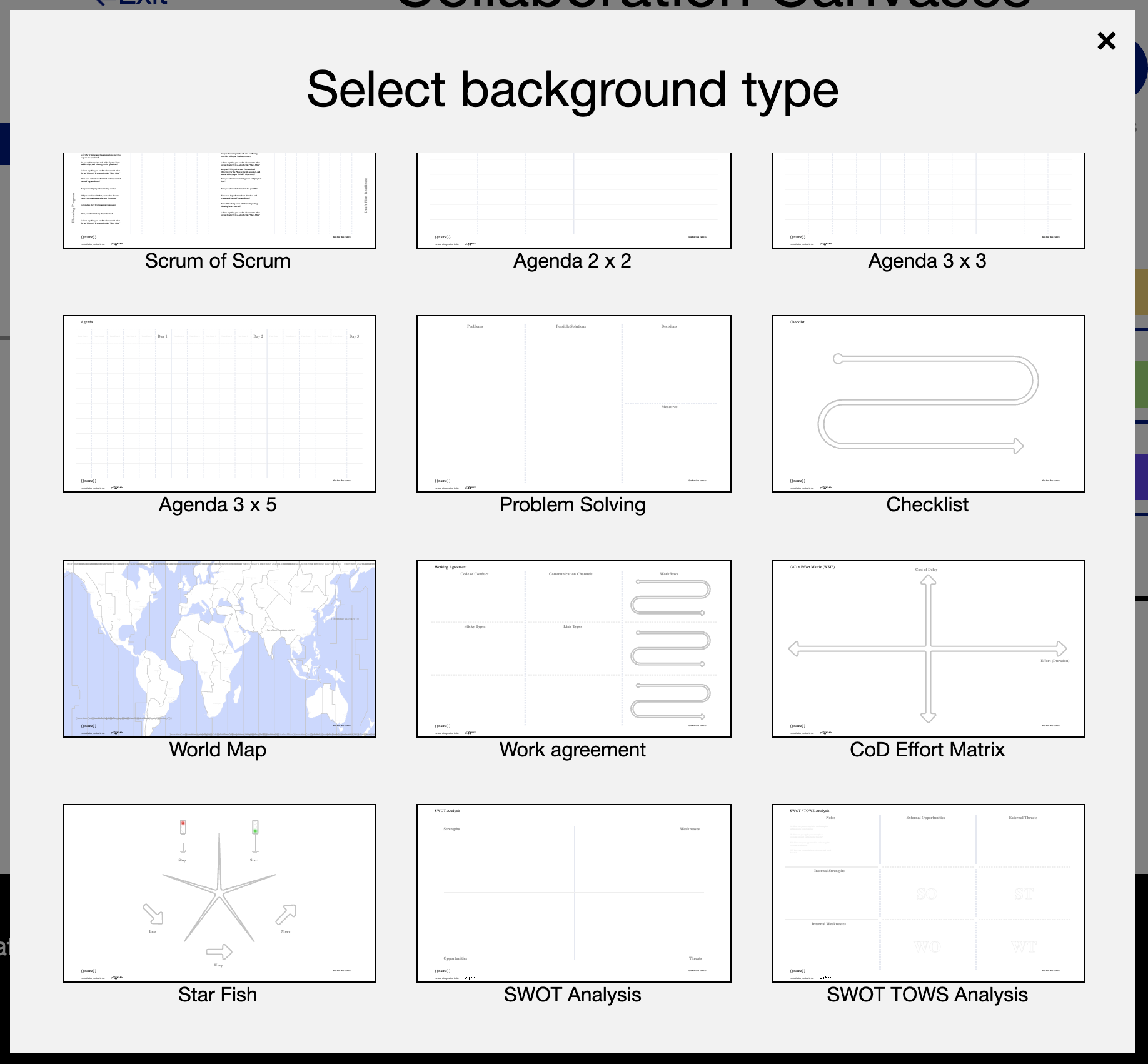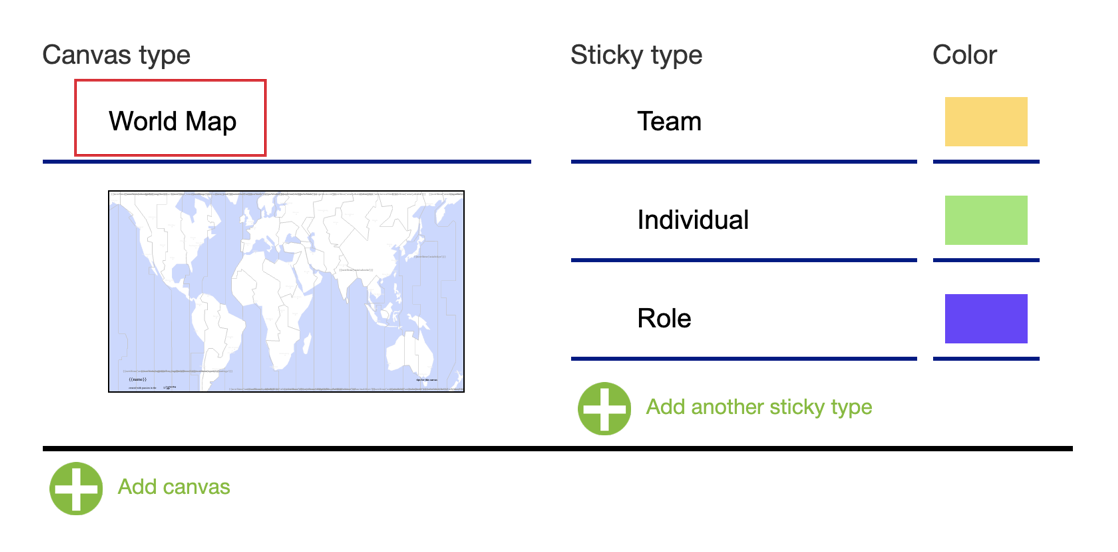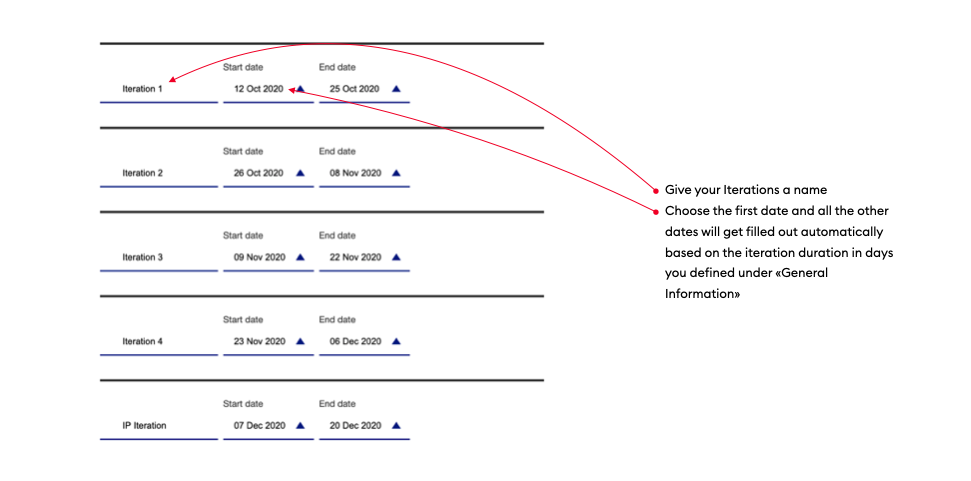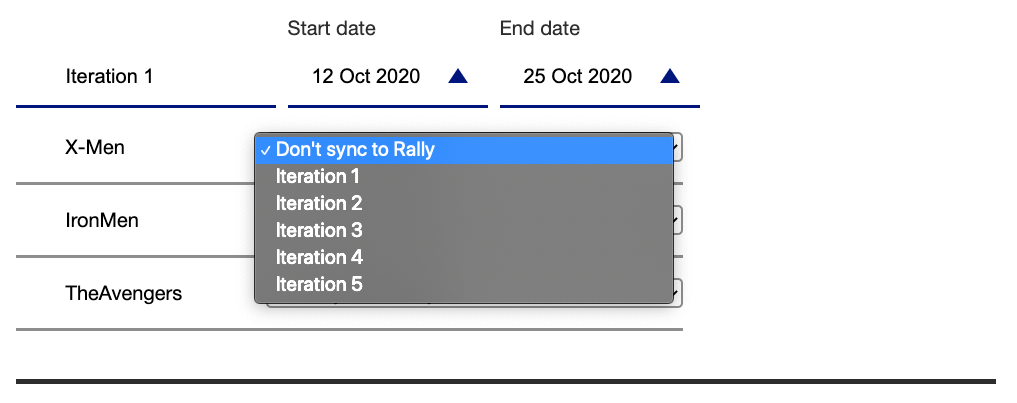with Rally Sync
Index
Attention
Before you can start with that you need to connect the piplanning app with your Rally instance: ALM Configuration
1. General Information
When creating a new PI Planning session in general information page, you can set the following fields.Name Description Start date of your PI Planning The date when PI Planning will take place. Can be edited also after session is created. The date is then displayed in the PI planning app when selecting a session from session list. Number of Iterations max. 12 Duration of one Iteration in Days This includes days on weekend. Based on the amount of days the dates under step 9 Iterations will be automatically filled in.
Select your ALM Tool Connection
2. Add Teams (Boards)
While configuring a new session, you have to decide which teams will attend this session. You can do that by selecting either an ART or a Solution-Train. Teams can only be added to a session during the session creation. You can not remove / add a team-(board) afterwards. In the example of the screenshot we selected the ART "Animals" which consists of the teams listed under the ART-Name. All these teams will get their own team-board. On this page you can: You can add teams to a session without giving them an own board and swimmlane. This is useful for scenarios where you want to provide a Solution Level Board spanning multiple Programs. A team which is attending a session (but does not have its own Team Board in that session) can then join (see and edit) that session as well.Team Boards / Program Board Swimmlanes
Selecting ART or ST
Attending Teams (without Board / Swimmlane)
To add a team as a an attendee to a session:
3. Team Boards
If you check the box, teams will be able to Move Stickies from one Team Board to another Team Board. For the Sticky Types Configured on the Program Backlog Board and the Team Board (Origin Boards) you can configure if Teams should be allowed to visualize (Mirror) the Sticky Type on another Board. Per default, Dependencies and Program Backlog Board Sticky Types can be mirrored to the Program Board. There are two special sticky functions in place A Sticky Type with function Dependency does have special attributes. Consider the standard workflow using dependencies. Hint Don't sync the dependency sticky to your ALM Tool. The dependency sticky is a "meta"-sticky used to get a simpler way to collaborate on dependency and visualize them on the Program Board (less crowded as you don't need to visualize all the dependent team level stickies.Configure Sticky Types for Team Boards
Move/Mirror Stickies
Move
Mirror
Sticky Functions
Dependency
Risk
If you configure the same Rally work items for multiple piplanning app sticky types the color can't be differentiated anymore by the piplanning app.Team Board Sync
4. Risk Board
As Risk Sticky Types moved from the Team Boards on to the Risk Board will get the Sticky Type and color of the first Sticky Type, this might be a useful configurationConfigure Sticky Types for the Risk Board
5. Backlog Board
Configure Sticky Types for the Program Backlog Board
Backlog Board Sync
Choose the Rally project from which you want to synchronize your Program Level work items. You can sync one Rally Portfolio Item Type with the piplanning app. It will allow you only to sync the Portfolio Item Type which is the lowest in hierarchy. In this example above (screenshot) it will allow you only to sync the type "Feature". The reason for this: Parents of team-level work-item types (user stories) can only have the lowest of the portfolio workitem types as a parent. If you use Tags and Releases in combination, they will together from the condition which defines the portfolioitems pulled into the app. Only portfolioitems appear which have the Tag AND the Release set. To prevent to have all portfolioitems of a certain type on the program-backlog board, you can set a tag to specify which items you want to have on your piplanning backlog board. You can select one more tags. They will be combined as AND. You can select one Release out of the list of Rally Releases with the state 'planning'. In Rally, each team (Project) has its own release. So a common use-case is to create a Release on a parent level project and then automatically cascade down the release to all child-projects. To include all portfolioitems of all child-projects as well, the piplanning app does the filtering by the Release Name (not the ID). When you select another Project after Release was already selected, you may see the following warning: This warning is displayed in a case where previously selected Release (ID value is displayed) is not present in a new Project which you just selected. You can sync either the WSJF value or the a value from a Rally select-list (dropdown) to the field on the bottom right of the backlog sticky note.Rally project
Rally portfolio type
Filtering
Tags
Releases
You can re-select the original Project to get rid of the warning or change Release to -- No release -- option.WSJF or Preliminary Estimate (Step estimate)
6. Program Board
Configure Sticky Types for the Program Board
7. Collaboration Canvases
Collaboration Canvases can be provided to your teams to cover different use-cases before, during and after a PI Planning and are designed to support the whole Program Increment execution and lean-agile workshops on every level in your organization. Already in the piplanning app, check out how to Use Collaboration Canvases. press "Add Canvas" provide a Canvas Type Name press on the Background Preview Choose your Background Your teams will see all Canvas Types you provide in the piplanning app. Provide the Collaboration Canvas Type with a meaningful name. For each Collaboration Canvas Type you can define what Sticky Types teams will be able to use. Every Canvas Background comes with a pre-defined Sticky Type set adapted for the specific background. You can add, change or delete Sticky Types.Add a new Collaboration Canvas Type
Add Canvas Type
Choose a Canvas Background
Provide a Canvas Type Name
Define Sticky Types
8. Links
The only link which is currently synced is the link between team-level items (user stories) and the lowest portfolio-item (Feature). Parent / Child links
9. Iterations
For each Team, select a Rally Iteration which maps to a piplanning app iteration. In the dropdown you will see all iterations from Rally from the project you mapped the piplanning app team to. Keep in mind, that we only list iterations which do not have the state Accepted.Iteration Mapping
Use the Session in the piplanning app
Start the piplanning app in your browser and start planning.

